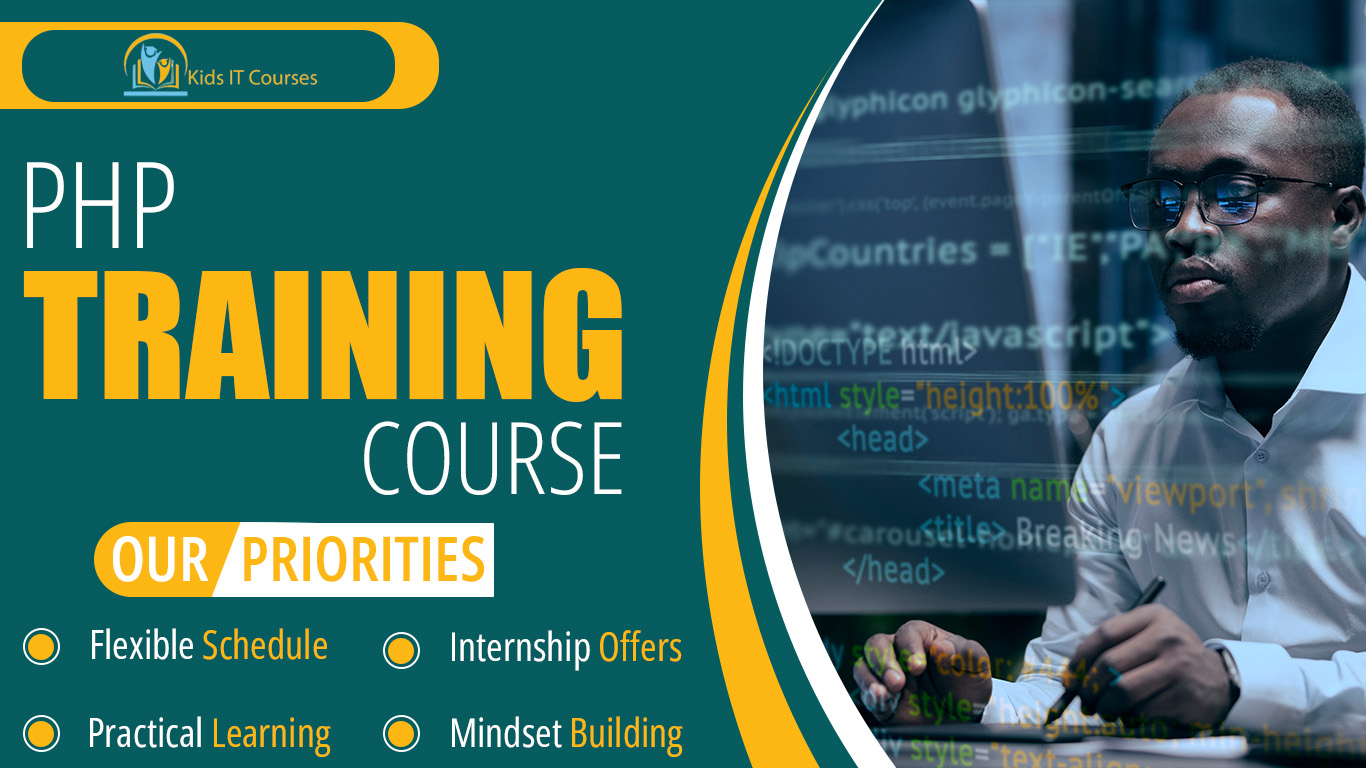
PHP Course for Kids
Definition
• PHP helps build websites. Kids learn to create pages.
• It talks to servers. To show content fast.
• Kids write simple code. To make websites smart.
• They learn to store data. Like names and scores.
• Kids fix bugs in code. Make websites work better.
• It teaches coding basics. And how websites run.
• Prepares kids for tech jobs. Web skills are very useful.
Importance
• PHP helps build websites. Kids learn how sites work.
• It makes websites smart. With buttons and forms.
• Kids can create games. And fun projects online.
• It teaches coding basics. Easy to understand and use.
• Kids fix problems fast. Learn to think clearly.
• PHP is used everywhere. Many websites need it.
• It prepares kids early. For tech jobs in future.
Advantages for Freelancing
• PHP helps build websites. Kids can create cool pages.
• It is easy to learn. Good for beginners.
• Kids make interactive sites. Where users can click.
• It works with databases. Stores information safely.
• Kids practice coding logic. Think step by step.
• It helps in many jobs. Web skills are useful.
•Builds confidence in tech. Kids feel proud and smart.
Session 1 : Introduction to PHP
What is PHP and how it powers websites
Real-life example: A waiter taking your order and serving food (server-side scripting)
How PHP interacts with HTML to create dynamic content
Installing and setting up a local server for PHP (XAMPP or WAMP)
Activity: Write a basic “Hello, World!” PHP script
Session 2 : PHP Variables, Data Types & Operators
Understanding variables and data types in PHP
Real-life example: Storing information in different containers (string, integer, array)
Using operators to perform calculations
Activity: Create a PHP script that performs basic arithmetic operations
Session 3 : Control Structures – Conditions & Loops
How to use if-else statements for decision-making
Real-life example: Deciding what to wear based on the weather (conditions)
Using loops to repeat tasks (for, while, do-while)
Activity: Create a PHP script that checks a user’s age and displays a message
Session 4 : Functions and Arrays
What are functions and why they help in PHP
Real-life example: A recipe with steps (functions)
Understanding and using arrays to store multiple values
Activity: Write a function that calculates the average of numbers in an array
Session 5 : Working with Forms and User Input
How to process form data with PHP
Real-life example: Filling out a survey and getting results (form handling)
Using the
$_GETand$_POSTmethods to collect inputActivity: Build a simple feedback form and process the data with PHP
Session 6 : PHP and MySQL – Connecting to Databases
Introduction to MySQL and why databases are important
Real-life example: A library keeping track of books (database)
How to connect PHP to a MySQL database and retrieve data
Activity: Create a PHP script to display data from a database
Session 7 : Sessions, Cookies & Authentication
What are sessions and cookies and how they store user information
Real-life example: Logging into a website and keeping track of your session
Implementing user login systems with PHP
Activity: Build a simple login page with session handling
Session 8 : Final Project – Create a Simple PHP Web App
Plan and build a small dynamic web application using PHP
Use forms, functions, arrays, and MySQL for dynamic content
Test and debug your application
Activity: Present your web app to others, explaining the PHP code used
Bonus Materials
PHP cheat sheet (with functions, operators, and syntax)
SQL and MySQL beginner’s guide for PHP
Link to PHP community forums for learning and support
Sample projects for practice (login system, contact form, etc.)
Certificate of Completion for PHP Basics
